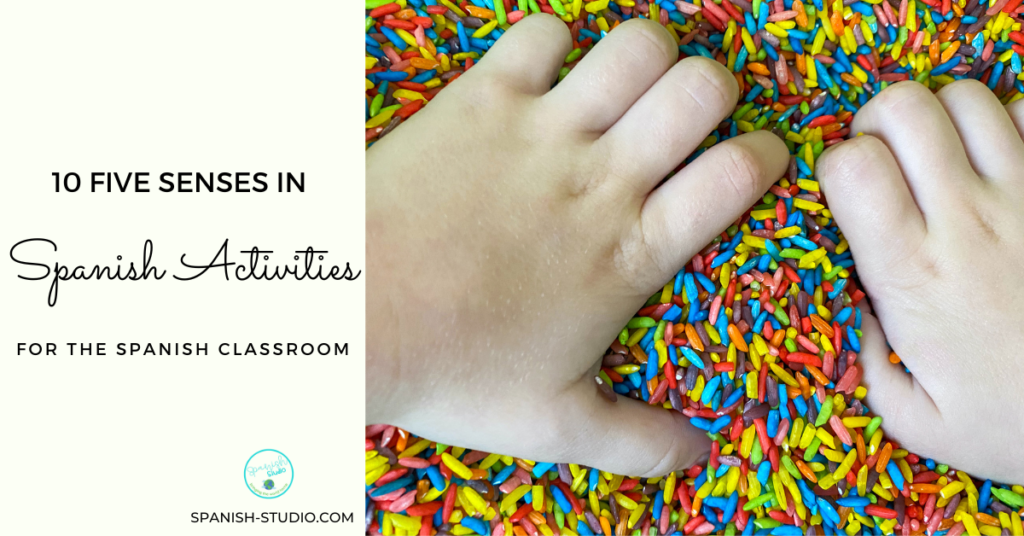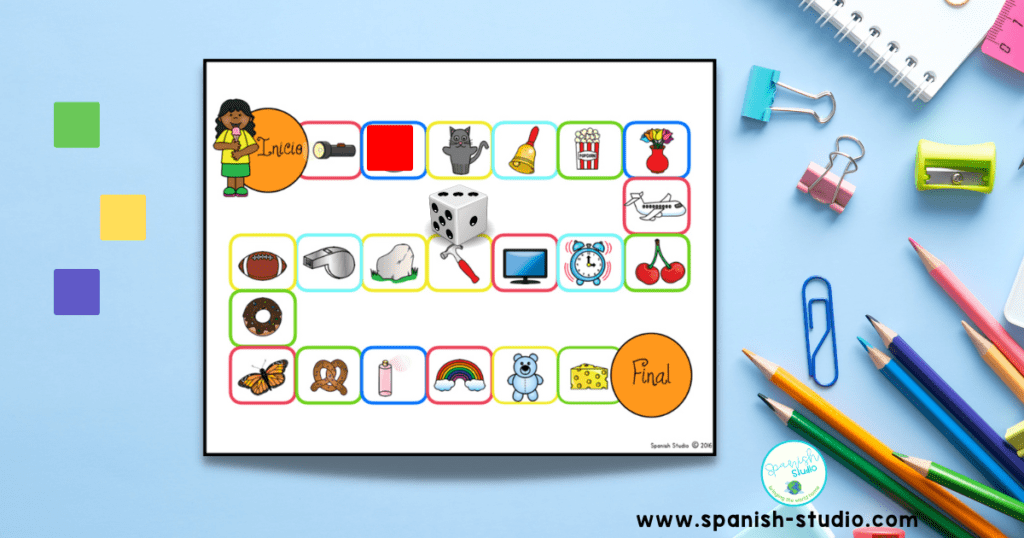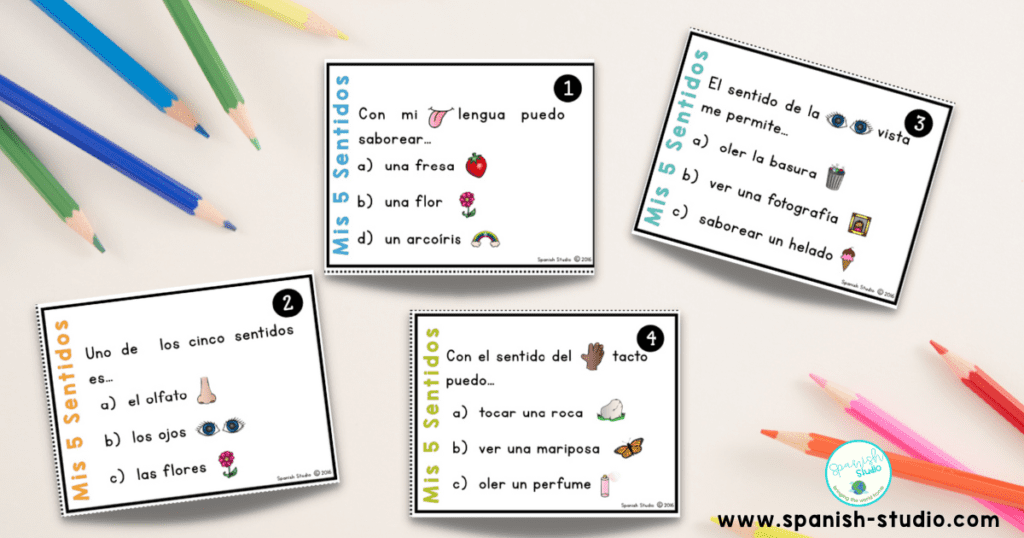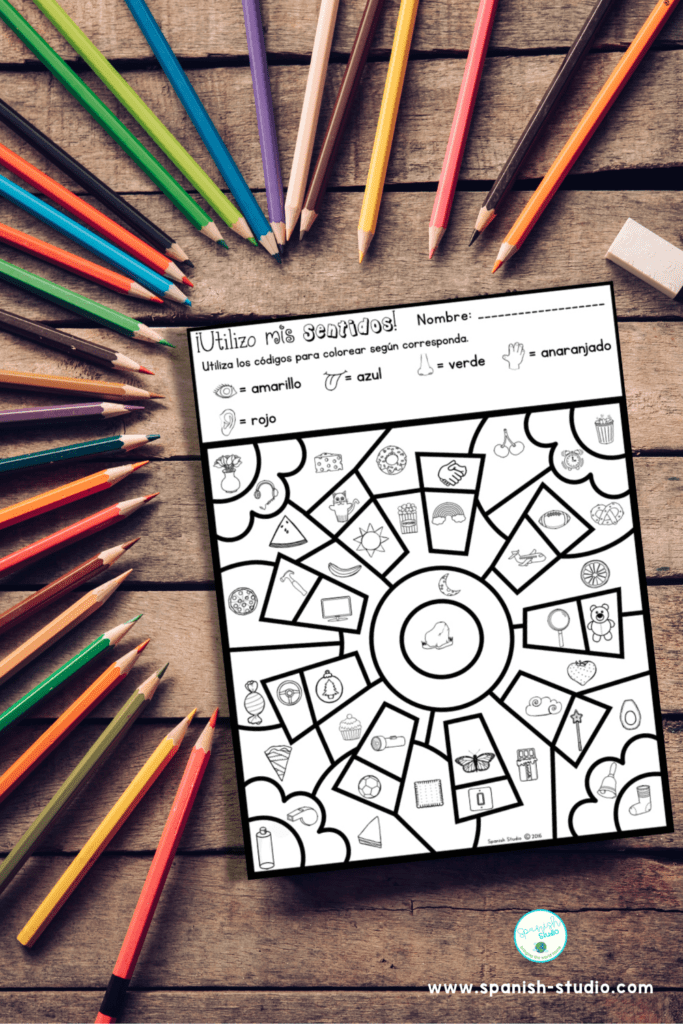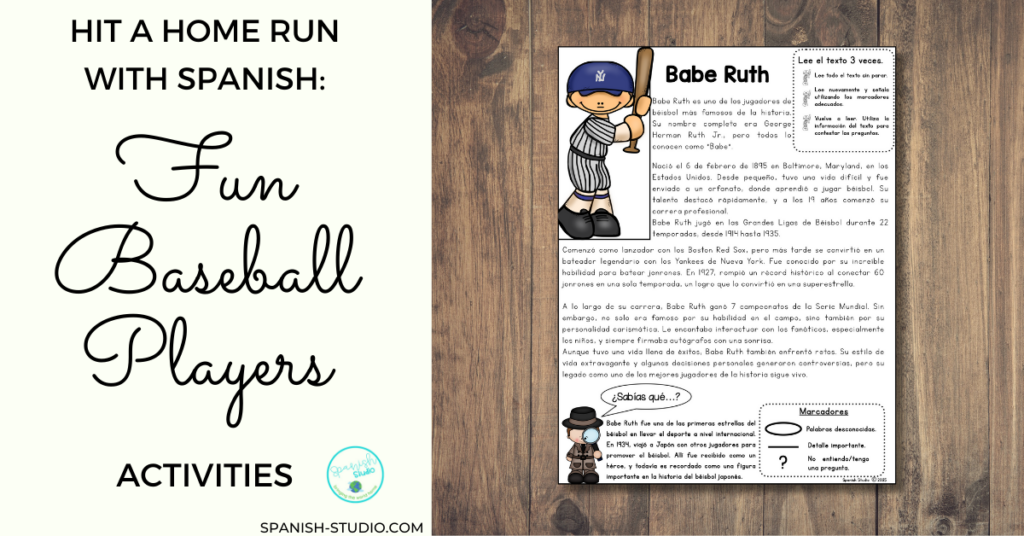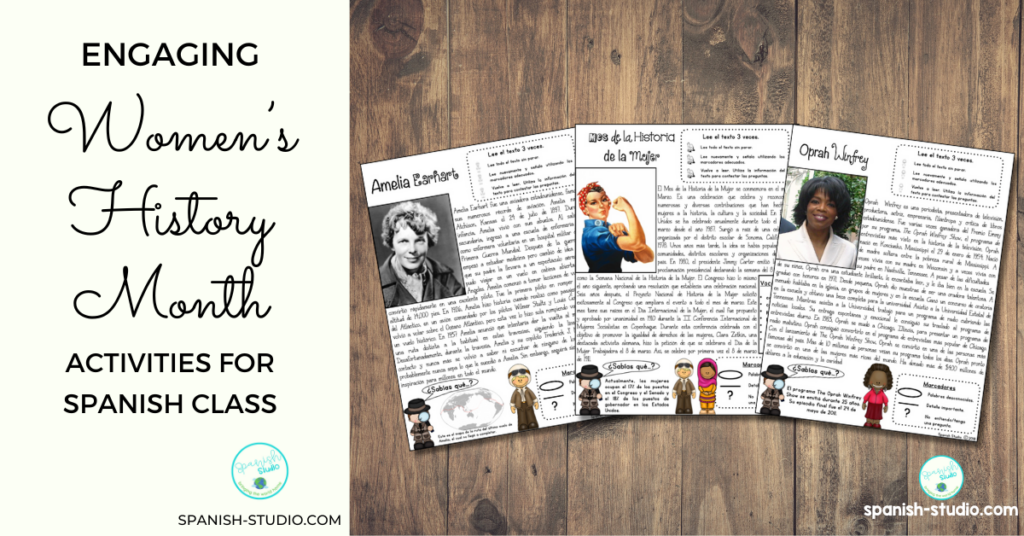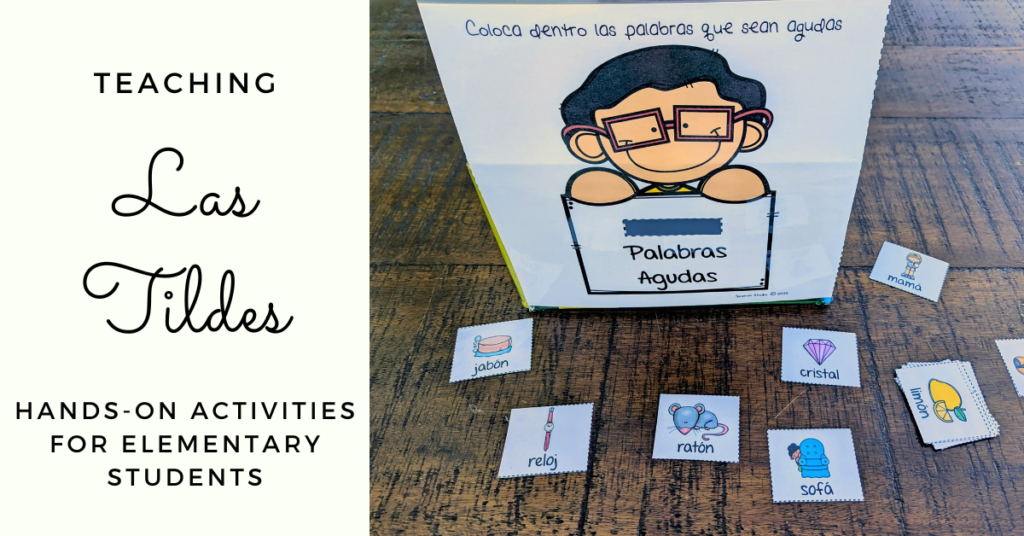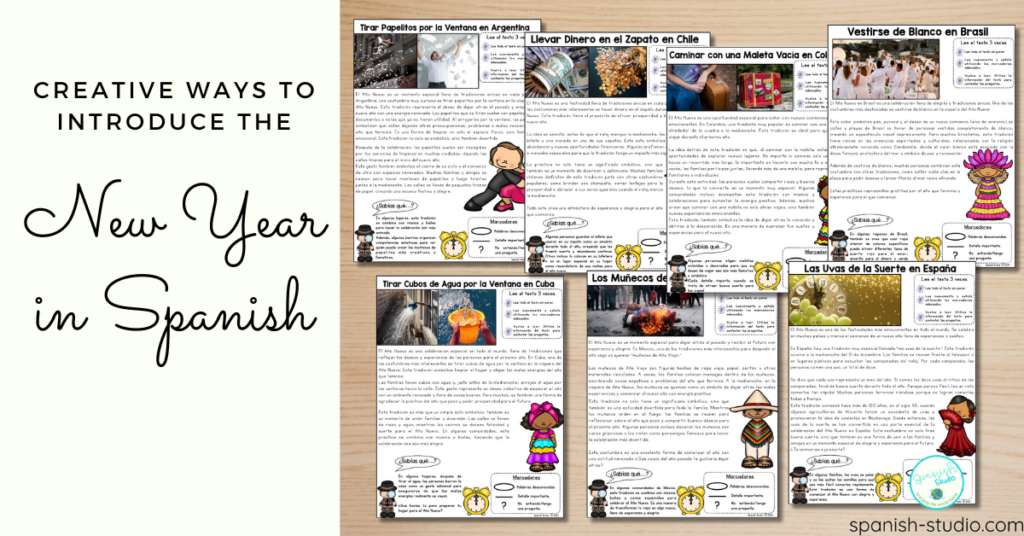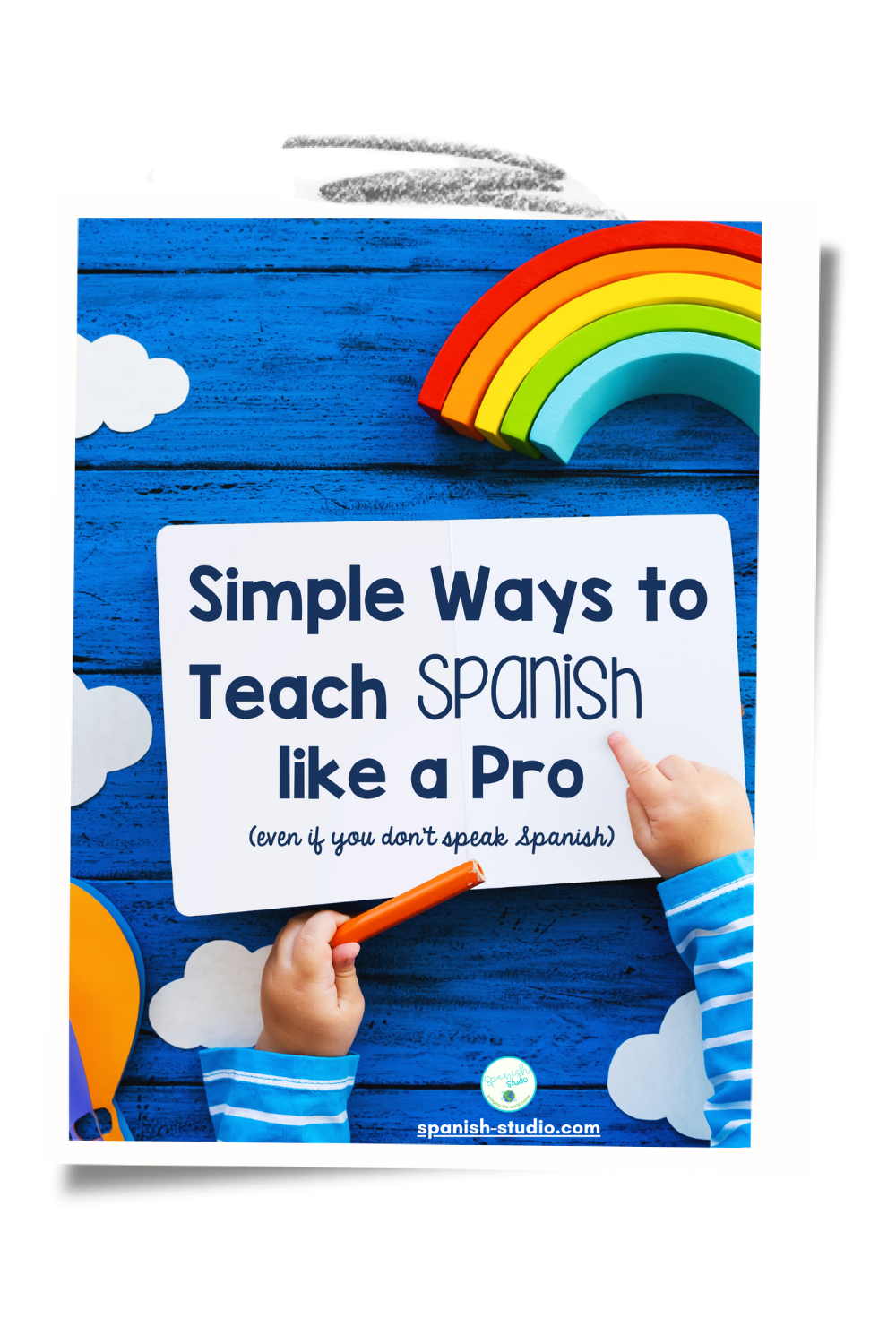The Five Senses in Spanish is a great thematic unit to use in the Spanish Classroom. Little children are naturally driven to explore the world around them, and they do it through their five senses. Because language acquisition happens through repeated exposure to the language used in different contexts multiple times, all the input children obtain is received through their sight, hear, smell, touch and taste. This is one of the many reasons why the Five Senses in Spanish is a great topic to include in your Spanish classes.
How can you teach the Five Senses in Spanish?
The best way to teach the Five Senses in Spanish is through Comprehensible Input (CI). For this to happen, it’s important that you teach any concept and/or vocabulary in context. In a way that is easy for children to understand. Throughout the years, I’ve found that the best way to do this is by breaking my lessons into chunks or parts. For all thematic units, this is what has worked for me. I usually split my lessons into three parts:
First, we work in a whole group. During this time, I act as the moderator, making sure my students receive all the necessary input in a comprehensible way. I usually read a book about the five senses in Spanish, where vocabulary is introduced. Then, I read it a second time using puppets or any Total Physical Response (TPR) activities.
After that first and second interaction with the story, I have them practice the new vocabulary with a song.
During the second part of my lesson, children rotate through different learning stations or learning centers. For this part, I previously prepared age-appropriate, engaging activities that keep my students interested in the topic being studied.
The last part is used for extra practice, assessment or homework. I usually give my students a worksheet about the five senses in Spanish or assign an independent activity online.
Some activities I use to teach the Five Senses in Spanish are:
Play Simon Says:
This is one of the best games for Total Physical Response. I have my students act out all the commands given by Simon. I include commands related to each sense.
Guess it:
I ask students to bring small objects from home and place them in the center of the classroom. I have them sit down in a circle, and start calling them out one by one. When the first student stands up, I ask him/her to take one object from the pile and try to identify it. Then, I tell them to mention what sense he/she used to identify their object. If the object is a teddy bear, they could say they used their touch or sight. Or, if it’s a cologne, for example, they can say they used the sense of smell to identify it. This is a great game not only to practice the five senses in Spanish, but also to learn new vocabulary words.
Five Senses in Spanish Flashcards:
Flashcards are a great resource to practice any topic or skill. When teaching the Five Senses in Spanish, I like to use them to review vocabulary, play games, and to assess students. I make sure to have ones that include both the written concept and an image to support comprehension.
Board Games:
These type of games are great to use during Centers. Students have the opportunity to compete with each other while practicing the Five Senses in Spanish. The eagerness of winning makes it a fun and engaging game to play.
Five Senses in Spanish Puzzles:
Another great resource is to have students identify and practice the Five Senses in Spanish with puzzles. When they match each sense with the corresponding card, they need to be able to identify the part of the body used for each sense and match it with the corresponding noun or action.
Task cards:
This resource is so versatile, you should always have it available in your classroom. I use task cards during whole group activities to start conversations, in small groups or pairs to go on a Scavenger Hunt, and during center activities to complete a specific task. It’s a great resource to focus on multiple skills.
My Five Senses in Spanish Interactive Notebook:
This is another wonderful resource that I like to use during Center or Independent activities. Students cut, sort and glue the different nouns and actions with the corresponding sense. It’s a great activity that keeps students engaged and eager to continue learning. It provides opportunities for extra practice, reinforcement and assessing students.
Color by Sense:
I love these type of activities. They give my students the opportunity to reinforce what they already learned in the classroom. Students use the codes in the worksheet to color the picture. They need to match the sense with the appropriate noun or action.
Writing Prompts:
These are a great tool to encourage children to write about their five senses and what they think they use it for. It’s a great opportunity to reinforce any concept, to challenge and assess students.
Sort, cut, and glue:
This is another wonderful activity to provide children with the opportunity to practice the five senses in Spanish. During this activity, I ask my students to cut, sort, and glue each sense with the appropriate picture that matches the sense being used.
Interested in more?
Download my FREE Guide: “How to Teach Spanish Like a Pro (even if you don’t speak Spanish)”

